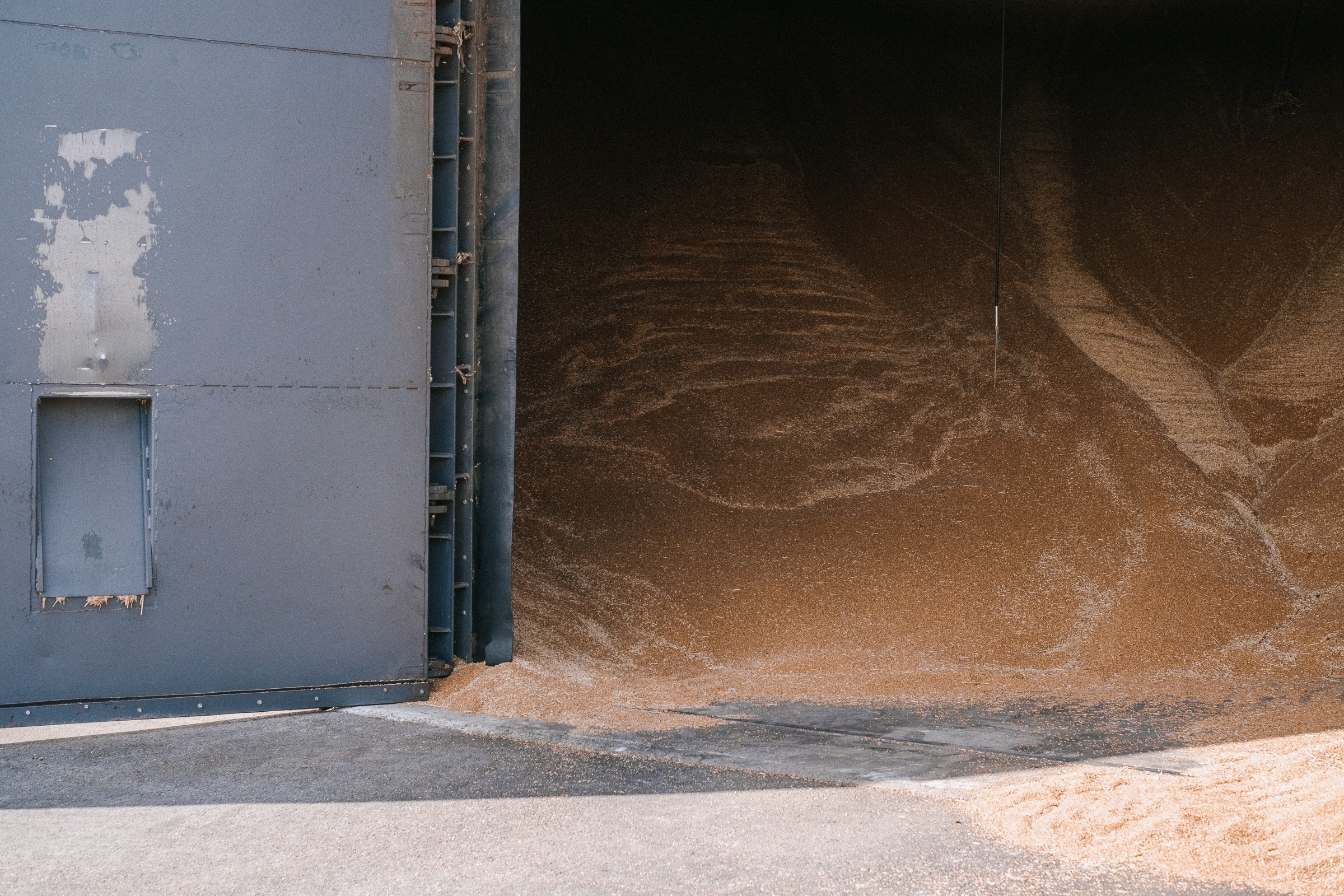*Arvalis is a leading French agricultural research institute dedicated to improving crop production and sustainability through applied research and innovation.
Article written by Katell Crépon, Head of Grain Storage and Preservation at Arvalis (Boigneville)
What is the impact of grain aeration strategies on its performance?
On its pilot platform in Boigneville (France), ARVALIS* has been comparing storage methods for several years, applied to batches of soft wheat harvested on the farm of the ARVALIS experimental station. The objective is to understand the impact on grain quality, infestation levels, and the cooling aeration performance of these different stategies.
What methodology did we apply?
Among the comparison criteria is the grain cooling aeration control mode. Three control modes are observed:
- A so-called 'scheduled' control, which involves activating the ventilation only if the forecast outdoor temperatures remain below a 'threshold' temperature throughout the time window from 10:00 p.m. to 6:00 a.m. Decision is made every day at 5:00 p.m. based on the hourly forecasts from the 'MétéoCiel' site (Arome model, hourly forecasts). Each aeration period lasts for 8 hours.
- An automatic control using a thermostat (Sec-LIS©), which involves programming an automatic activation threshold for the aeration. The aeration periods begin as soon as the outdoor temperature falls below the set threshold and stop as soon as it rises above the threshold. Their duration is variable.
These first two control modes are conducted in successive steps. The first step aims to reach 20°C in the grain, while the second aims to reach 12°C - An automatic control that takes into account both the outdoor air temperature and the grain temperature, based on the temperature difference between the hottest point of the stored grain and the outdoor temperature (the so-called 'automatic' mode of the Javelot system).
This third control mode is not conducted in steps but continuously. The activation set point for the fan constantly changes based on the outdoor temperature and the grain temperature. The default settings were used during the first year of testing, namely aeration with air that is between 7°C and 10°C cooler than the hottest point of the grain. In the second year, the set point was modified to broaden the aeration options to air temperatures between 8°C and 20°C below the temperature of the hottest point of the grain. Each aeration period lasts a minimum of 1 hour in the first year and 3 hours in the second year.
The three bins, operated with different aeration strategies, are all filled with 40 to 45 tons of soft wheat and ventilated with identical fans. For temperature monitoring, the bins are equipped with thermometric lines that measure the grain temperature throughout the height, with sensors spaced 80 cm apart. For the comparison between the three control modes, the cooling of a bin is considered complete when all temperature readings at the same time are equal to or below 12°C, a temperature below which insects no longer reproduce. To measure the sensitivity of the performance of the different control modes to this objective, the calculation of the number of hours required for all points to be below 12.5°C was also carried out.
What is the impact on the performance of aeration stategies?
Two indicators can be used to assess the performance of aeration: the number of hours required to achieve the desired temperature, and the completion date of the cooling process.
Tables 1 and 2 present the number of aeration hours required to reach 12°C or 12.5°C with each of the three control modes considered. It is initially noted that there is a significant effect related to the campaign, regardless of the control mode, both on the number of hours and on the completion date. Another observation: the desire to reduce the entire grain mass to 12°C rather than 12.5°C, including at the top of the bin, can lead to a considerable increase in the number of hours required. This is particularly true in 2022/2023 for mode 2.
However, regardless of the campaign and the objective, the lowest number of required hours is achieved with the automatic control by difference (mode 3), and the highest with the automatic control by threshold (mode 2). The gap between the two modes is significant: between +60% and +90% more hours for mode 2. In contrast, the threshold control allows for the earliest completion of grain cooling in all observed situations. However, the difference, when it exists, is only 7 days.


What explains the difference between the three ventilation control modes?
With two years of trials, we can only report observations that will need to be confirmed with more hindsight.
When comparing modes 1 and 2, both conducted in two steps with identical thresholds, it is observed that the decision rule we imposed for mode 1 (the total hours between 10:00 p.m. and 6:00 a.m. with forecast temperatures below the threshold) results in aeration being carried out later, which is particularly evident in 2023/2024 with a completion date delayed by more than a month compared to the automatic control by threshold mode. As a result, the average temperature of the injected air is consistently lower with this scheduled mode, despite a small number of aeration hours with air temperature above the threshold, usually at the beginning of the aeration period, related to a forecasting error.
Regarding the two automatic control modes, observing the impact of the set points on the quality of the incoming air reveals a significant difference between these two modes, particularly at the beginning of storage when the grain is still warm. This is shown in Figure 1. The possible aeration periods are all those for which the outdoor air temperature is below the fixed activation threshold for mode 1 (the threshold is shown in black) or all those that fall between the two mobile activation (in orange) and stop (in yellow) thresholds for mode 3. At the beginning of storage, that is to say during the execution of step 1 of mode 2, the possible aeration periods for this mode are much more numerous than for mode 3. The fan frequently activates, but with outdoor air temperatures that are often higher, as shown in Figure 2.
What seems to emerge from these two years of observation is that the most efficient control for cooling the grain is to activate the aeration when the air temperature is 7°C lower than the hottest point of the grain (while not forgetting to account for the warming of the air due to the fan). By doing so, colder air is injected on average compared to when aeration is controlled with a single threshold per step. This may lead to a slight delay in cooling.
Note: Lowering the lower stop threshold for aeration in mode 3 between 2022/2023 and 2023/2024 allowed for the retention of aeration hours conducive to cooling with cooler temperatures. No impact on potential rehumidification of the grain was observed over the two years of observation.


*Arvalis is a leading French agricultural research institute dedicated to improving crop production and sustainability through applied research and innovation.
Article written by Katell Crépon, Head of Grain Storage and Preservation at Arvalis (Boigneville)

